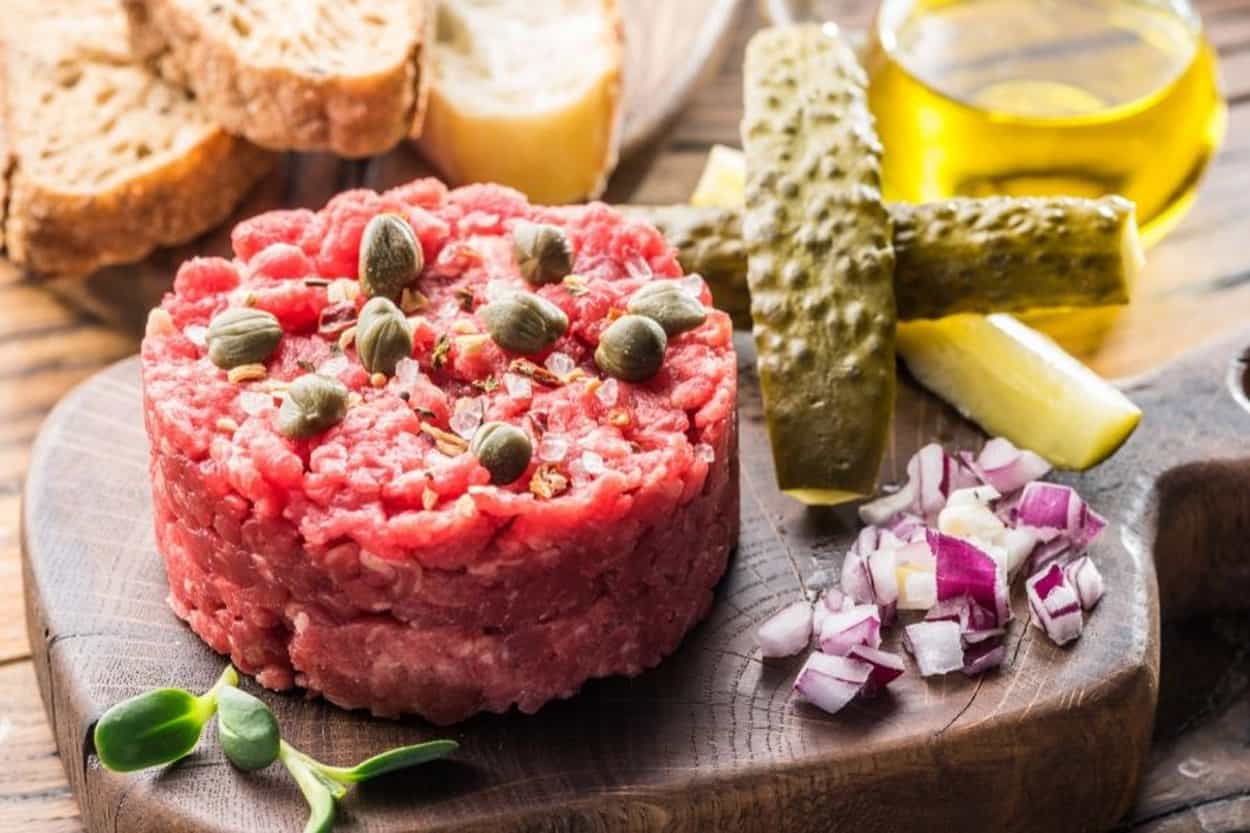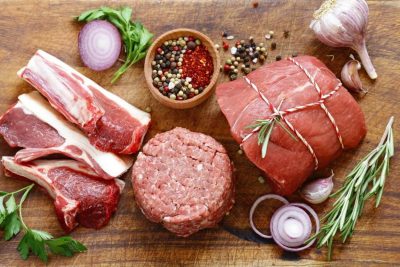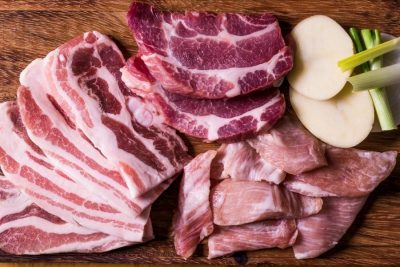
Raw Meat Diets
If you’ve never heard of raw meat diets, it may come as quite a shock to learn that there are people out there who consume raw meat on a regular basis. Perhaps you have enjoyed sushi and beef tartare on occasion, but have you eaten raw ground beef instead of a cooked burger and chicken sashimi instead of cooked chicken?
While the idea of a raw meat diet might seem a little prehistoric, there are people who believe that there are a lot of benefits of this diet—and not just for pets. In this easy-to-read guide to raw meat diets, we will answer some of the most common questions surrounding this unusual diet.
When you’ve finished reading, you will be able to make an informed decision on whether or not to try a raw meat diet. Without further ado, let’s get right into it.
Table of Contents
Are Raw Meat Diets Common?
Raw meat diets or “primal diets” are diets that consist of raw or undercooked foods. A diet that has been around as early as paleolithic times, the raw meat diet has gained a bit of popularity in recent years from a select group of people who believe that it is beneficial to overall health.
Not to be confused with the Raw Food Diet, which involves a diet based on uncooked fruits and vegetables, this diet is based on consuming the following:
- Raw meats
- Raw seafood
- Raw eggs
Can you imagine eating nothing but raw meat, seafood, and eggs? No vegetables! No fruits! No colors! Well, except for the color red, of course. While it may not sound super appetizing, proponents of the diet say they have been dining on raw meat for years for the supposed health benefits. Go figure!
Raw Meat Dishes
Think you’ve never eaten raw meat before? Think again. If you’ve ever enjoyed sushi, steak tartare, or beef carpaccio… you have most likely eaten raw meat!
In the United States, raw meat is pretty taboo outside of well-known popular dishes like the ones mentioned above. However, in other parts of the world, raw meat dishes prevail as classic diet staples. Let’s briefly cover some of the most popular raw meat dishes from around the world.

- Hangul: Korean raw ground beef with a raw egg on top
- Carne Cruda: An Italian dish featuring thinly-sliced beef steak
- Ossenworst: A raw ox sausage dish originating from Amsterdam
- Carpaccio: An Italian dish featuring some sort of raw meat such as beef or fish
- Torisashi: A popular Japanese dish made from thinly-sliced raw chicken
Would you ever try one of these dishes? We love a good carpaccio once in a while, but I think we will stick to enjoying our chicken at 165 degrees.
Risks of Eating and Preparing Raw Meats
You have most likely heard that eating raw or undercooked foods increases your risk of foodborne illness, but what exactly does that mean? There are very real risks involved in consuming raw meat, including the ways in which you handle them.
Have you ever seen someone wash their meat before cooking it in an effort to clean it? Not only is this an ineffective way of cleaning your meat, but it also increases the risk of spreading harmful germs throughout your kitchen.
Raw meat can contain harmful pathogens and bacteria like Salmonella, Listeria, and E. coli. Proponents of raw meat diets will tell you there are a few tricks to reducing the risk of bacteria, like freezing the meat first and purchasing only high quality meat.
However, the only true way to eliminate the risk of illness is to thoroughly cook meat to its recommended safe internal temperature. We recommend keeping a quality meat thermometer at home to ensure that your meat is properly cooked.
Raw Meat Bacteria
As previously stated, raw meat often contains harmful germs and bacteria. That is why proper food preparation is so important—it reduces your chances of foodborne illness. Each type of raw meat comes with the risk of contracting a different germ. Common meats and their bacteria include:

- Raw chicken commonly contains Salmonella that needs to be cooked out
- Beef or pork may contain E. Coli if not thoroughly cooked
- Fish or sushi may contain the parasite Anisakiasis
So, what about rare steaks: do they contain the same bacteria since they are somewhat cooked? Although it may seem confusing, rare steak is actually quite safe to eat, as long as you purchase the steak from a reputable source with quality meat.
Raw Meat Diet for Pets
We’ve discussed raw meat diets for people, but what about feeding a raw meat diet to pets? Is it healthy, unsafe, or what? According to many veterinarians, a raw meat diet can be harmful to your furry friends.
There is no long-term benefit to a raw meat diet for your pets—in fact, the risks tend to outweigh the benefits. It is not nutritionally balanced enough for most animals, which can lead to dietary deficiencies or malnourishment. Many raw meats may also contain sharp bones, which can cause broken teeth or intestinal blockages.
Additionally, the harmful bacteria found in raw meat can spread to humans just by preparing the food in the kitchen. This means that even if the raw meat does not make your pet sick, it could still make you sick. In general, a good rule of thumb is to just avoid a raw pet food diet altogether. A healthy pet is a happy pet!
Should I Try the Raw Meat Diet?
While eating raw meat every once in a while probably won’t cause you any harm, we recommend sticking to cooked meat for the most part. Harmful bacteria like Salmonella, E. coli, and Listeria are eliminated when meat is properly cooked. While these bacteria are not always present in raw meat, it is a risk to be aware of.
For this reason, we recommend always keeping a reliable food thermometer like our ChefsTemp Pocket Pro nearby when cooking with raw meat. This allows you to verify that your meat has been cooked to a safe internal temperature, so you can enjoy your favorite meals without concern.
If you’re interested in starting a new diet, try one that utilizes cooked food like the Paleo or Keto diet. Alternatively, you could try a raw food diet consisting of foods like raw vegetables, fruits, and nuts. Keep in mind that you should always consult with a healthcare professional before trying out a new diet.
Discover Other ChefsTemp Products
Discover more recipes and learn kitchen tricks by joining our cooking family on Facebook.
You may also like:















